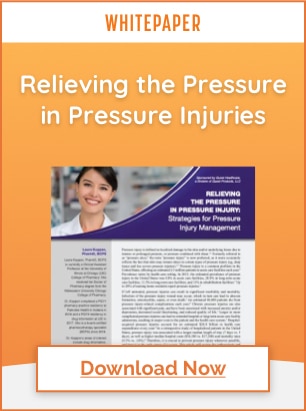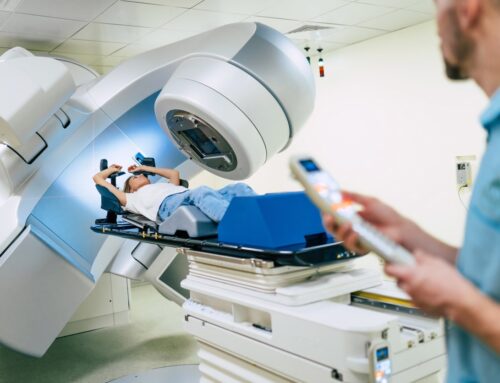
Autonomic Dysreflexia (AD): Putting The Pieces Of The Puzzle Together
Autonomic dysreflexia (AD) is a potentially dangerous and, in certain cases, fatal condition that results in acute hypertension in individuals with spinal cord injury (SCI) typically at or above the 6th thoracic vertebrae (T6).1
All caregivers, practitioners, and therapists who interact with patients with SCI should be aware of the symptoms and causes of AD to do everything possible to treat and prevent this potentially life-threatening condition.
Who is at Risk for Autonomic Dysreflexia?
Historically, it was believed that only patients with SCI above T6 were at risk, however recent research has shown those with injury at T10 and above have reported symptoms.2
Many incidents of AD occur within the first three months following spinal cord injury1 and approximately 17% of patients with SCI3 have at least one episode of AD in their lifetime.
Any injury or disease of the upper motor nerves can cause AD and there is a correlation between the level of injury and risk of AD. Patients with spinal cord lesions above T6 are at higher risk with a prevalence rate between 48-90%2.
Historically, it was believed that only patients with SCI above T6 were at risk, however recent research has shown those with injury at T10 and above have reported symptoms.3
What Causes Autonomic Dysreflexia?
Hazardous stimuli that put patients at risk for AD most commonly occur on the skin or originate in the bladder or bowel. When a noxious stimulus occurs in patients with SCI below their level of injury, the parasympathetic nervous system is unable to correct any correlating increase in blood pressure through vasodilation.
As such, vasoconstriction affecting the muscular, splanchnic, vascular, and cutaneous arterial circulatory networks continues, leading to severe and potentially dangerous systemic hypertension.4
To try to detect risk of AD, it is important for providers and caregivers to be on the lookout for varying skin conditions above versus below the level of injury.1 By way of example, skin may appear sweaty or flushed above the level of injury and cool, dry, and pale below the level of injury. This would indicate a potential risk of AD and treatment measures should be taken immediately.
Common Triggers of Autonomic Dysreflexia
BLADDER
The bladder is the most common source of AD episodes2. Anything that causes bladder distention, such as a overfull bladder, clogged or kinked catheter, bladder spasms, detrusor sphincter dyssynergia (when the bladder and bowel do not work in unison), bladder stones, or infection, can put a patient with SCI at increased risk for AD. Any urine containment equipment (i.e. leg bag straps that are too tight/overfull, undergarments saturated in urine, or external catheter straps) can also trigger risk of autonomic dysreflexia2.
BOWEL
The bowel is the second-most common trigger for an episode of AD. An incomplete or improper bowel management program, constipation, gas, diarrhea, fissures, and hemorrhoids are common bowel irritants 2 that put SCI patients at risk for AD.
SKIN
Any injury to the skin below the level of injury can trigger an episode of AD, from something simple such as a rash, bruise, ingrown toenail, or wrinkled sheet pressing into the skin to something more serious such as a bone fracture or deep cut. It is important to regularly inspect skin for injury and avoid constrictive clothing such as tight-fitting pants, shirts, belts, or bras, ill-fitting shoes, or clothing that is too baggy or lumpy2.
Autonomic Dysreflexia Symptoms
Typically, the initial presenting symptom for AD is a severe, bilateral headache4 caused by vasodilation above the level of injury. When this is accompanied by high blood pressure, the risk of stroke increases significantly. Other less common cardiac symptoms include bradycardia or tachycardia, with or without arrhythmia and atrial fibrillation.4
In addition to headache and hypertension, additional symptoms may include4:
- Vision disturbances
- Nausea and/or vomiting
- Dizziness
- Nasal congestion
- Pale skin that is cool to the touch
- Diaphoresis and flushing above the level of injury
- Constricted pupils
- Anxiety
- Goosebumps on the skin
Autonomic Dysreflexia Treatment
An increase in a patient’s normal blood pressure is the primary indicator of risk of AD and many episodes can be treated by identifying and correcting or removing any noxious stimuli. For significantly elevated blood pressure, antihypertensive medications with rapid onset and short duration may help5. After an incidence of AD, continue to monitor a patient’s blood pressure for at least two hours4.
Skin: inspect for skin injury or irritation below the level of injury. Adding a local anesthetic to the affected area can prevent further irritation and increased risk of AD5. Once corrected, there should be a correlating drop in the patient’s blood pressure.
Bladder: If the patient’s bladder is overfull, empty the bladder through catheterization. If a catheter is already in place, inspect for folds, obstructions, kinks, or any malfunction that may cause catheter blockage. If there are no obvious catheter or bladder problems, evaluate the patient for kidney or bladder stones.
Bowel: Evaluate the bowel for fecal impaction, fissures, hemorrhoids or other injuries. Remove any impaction through digital stimulation or manual removal using local anesthetic such as lidocaine jelly to prevent further irritation to the area. An effective bowel management program helps reduce the risk of AD and regain control over bowel functions after SCI6.
ENEMEEZ® is Fast-Acting & Gentle
The ENEMEEZ® formulation is a hyperosmotic, stool-softening laxative that works by drawing water into the bowel from surrounding body tissues. The docusate sodium in this mini enema product prepares the stool to readily mix with watery fluids. It softens and loosens stool and initiates a normal, replicated bowel movement, typically within 2-15 minutes.
ENEMEEZ® Plus is the same formulation as ENEMEEZ®, with the addition of 20mg of benzocaine, assisting in the anesthetization of the rectum and lower bowel. This formulation was developed for patients who experience autonomic dysreflexia, hemorrhoids, anal fissures, or painful bowel movements.
Request samples or an educational In-service for your facility today.
Disclaimer: The material contained is for reference purposes only. Quest Healthcare, A Division of Quest Products, LLC, does not assume responsibility for patient care. Consult a physician prior to use. Copyright 2023 Quest Healthcare, A Division of Quest Products, LLC.
SOURCES:
- https://my.clevelandclinic.org/health/diseases/24378-autonomic-dysreflexia-ad
- Autonomic Dysreflexia In Spinal Cord Injuries | Reeve Foundation (christopherreeve.org)
- The knowledge about autonomic dysreflexia among nursing and physiotherapy students – PMC (nih.gov)
- Autonomic Dysreflexia – StatPearls – NCBI Bookshelf (nih.gov)
- Autonomic Dysreflexia – PCP Information – Primary Care Provider Resource for Spinal Cord Injury | UAB
- Bowel Management – Living With Spinal Cord Injury (livingwithsci.ca)







